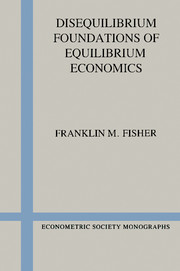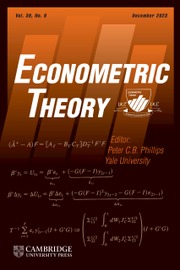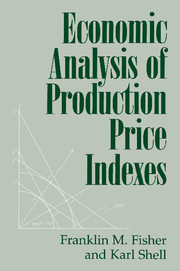Disequilibrium Foundations of Equilibrium Economics
The most common mode of analysis in economic theory is to assume equilibrium. Yet, without a proper theory of how economies behave in disequilibrium, there is no foundation for such a practice. The first step in such a foundation is a theory of stability, and this book is primarily concerned with that subject. The author first reviews the older literature on the stability of general equilibrium and goes on to consider a more satisfactory general model in which agents realize that they are in disequilibrium and act on arbitrage opportunities. Topics explored along the way include optimal arbitrage behavior, the relation of perceived monopoly power to quantity constraints, and the role of money.
- Critical of current assumptions underlying much of contemporary econometric analysis
- Suggests a more workable general model for analysis
- Author is well-known in field
Product details
March 1989Paperback
9780521378567
252 pages
229 × 152 × 15 mm
0.38kg
Available
Table of Contents
- Acknowledgments
- 1. Introduction: disequilibrium analysis and the theory of value
- Part I. Methods and Problems of the General Equilibrium Stability Literature:
- 2. The development of the stability literature
- 3. Hahn Process models: formal treatment
- Part II. A Model of Disequilibrium with Arbitraging Agents:
- 4. Allowing disequilibrium awareness
- 5. The theory of the individual agent
- 6. Transaction difficulties, individual price offers, and monopoly power
- 7. Walras' Law and the properties of equilibrium
- 8. Dynamics and stability
- 9. Concluding thoughts
- Appendix
- References
- Index.








